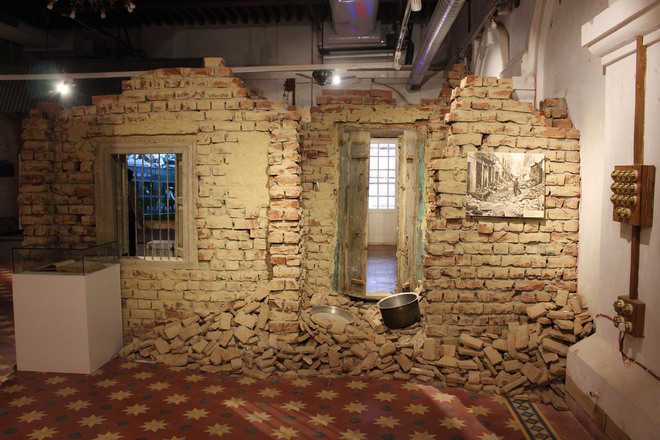Neha Saini
Tribune News Service
Amritsar, January 10
“The Jallianwala Bagh (1919) massacre should not be talked about as an incident that happened for one day. It had a larger impact afterwards on the lives of martyrs’ kin and who witnessed the brutal act of violence that day,” says Mallika Ahluwalia, CEO, Partition Museum. The museum has opened an exhibition titled Punjab Under Siege, a part of commemorating the 100 years of the tragedy.
“The exhibition was inaugurated in August last year and its aim is to tell stories that followed the unfortunate incident on April 13, 1919. It exhibits not just documents and memories of the Jallianwala Bagh massacre but also the narratives of the eye witnesses and families of the victims,” she informs.
Punjab Under Seige has documents, photographs, newspapers, details and first edition reports written at the time sourced from various archives. In addition, it has old maps of the undivided Punjab, audio narratives from witnesses that have been recorded by the museum, statements from victims and their families, films, General Dyer’s testimony in the UK and Congress reports. Some of the rare exhibits include a photograph titled Crawling Order that shows how the British humiliated leaders of the freedom movement by making them crawl in streets and take up other disrespectful acts. Also, books and literary material which were banned by the British after the incident have also been sourced and displayed at the museum.
“Most of the research for the archives for the exhibition was done by Kishwar Desai, chairman, Partition Museum Trust, who has also written a book on Jallianwala Bagh. We ware also planning to take the exhibition to different cities of Punjab and the UK so that generations should know about the chapter that changed the course of Indian nationalist movement and its history,” says Mallika.
Unlock Exclusive Insights with The Tribune Premium
Take your experience further with Premium access.
Thought-provoking Opinions, Expert Analysis, In-depth Insights and other Member Only Benefits
Already a Member? Sign In Now










